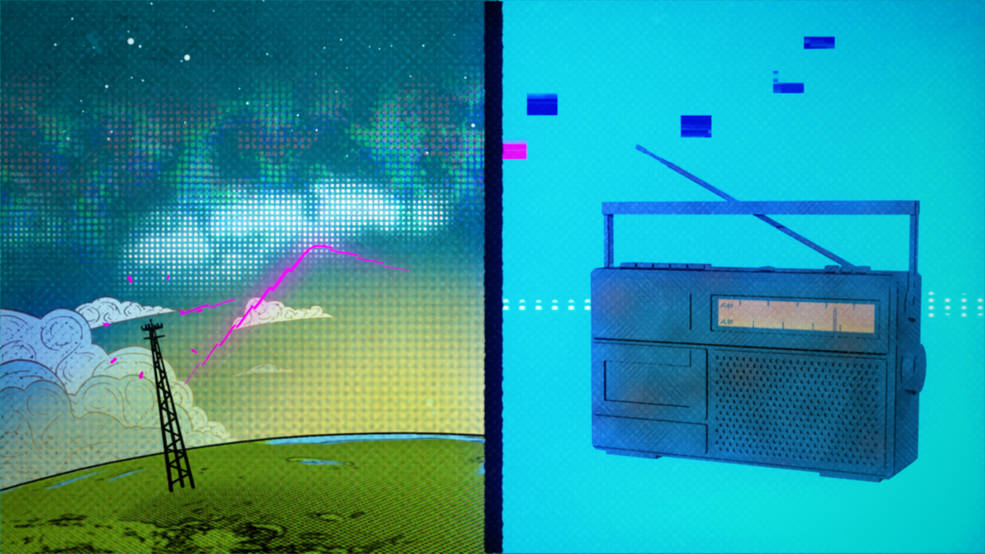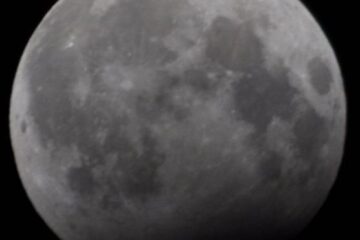If you’ve ever had any burning questions you wanted to ask an astronomer, here is the place to do it! We’ve answered some common questions here, but if you have any more you’d like an answer to, comment on this post.
- What is spectroscopy?
Gavin Ramsay says: Spectroscopy is a means of identifying what objects are made of. When you see a rainbow, you are seeing the spectrum of the Sun. Droplets of water act a bit like prisms and spread the light from the sun into a continuous range from the blue to the red. Instead of water drops, astronomers use spectrographs on telescopes to get spectra of stars and galaxies. If you get enough photons and the spectrograph has enough resolution you will start to see dark – or sometimes bright – bands in the spectra which are caused by elements and complex material. Astronomers use spectra to find out how stars and galaxies are made and obtain information about their motion.

- Why do we put telescopes in space?
Chris Duffy says: So that we look at the sky without Earth’s atmosphere in the way which can distort and block signals from space. Astronomers learned early on that by putting telescopes high mountains we could see far more than down on the ground because the air was thinner. By putting telescopes in space, we’ve been able to see even more, even detecting planets in other solar systems!
- How do we get information back and forth from spacecraft we send across the Solar system?
Tolis Christou says: In two words, radio waves. Spacecraft come with radio transmitters and receivers, allowing them to communicate with ground controllers on Earth. The same radio waves are used by mobile phone networks or the wireless connection on your computer. Because of the great distances involved, signals from spacecraft are usually very weak when they arrive on Earth, so we use huge dish-shaped antennas to receive them. NASA uses a set of antennas called the Deep Space Network or DSN for short. These are located around the world so as to cover the entire sky at any given time. They are so sensitive they can pick up a mobile phone call from across the solar system.

- When was the first radio telescope built and where is the biggest one now?
The astronomer Karl Jansky first discovered that objects in space give off radio waves with the radio telescope he built in 1931. He is now known as the father of radio astronomy. Grote Reber then added to Jansky’s work in 1937, and undertook the first sky survey in the radio frequency. Both of these pioneers were from the USA, though Reber then moved to Tasmania to carry on his work.

Image Credit: NASA
The largest radio telescope currently, is The Five Hundred metre Aperture spherical radio Telescope (FAST) in Ghizou province of China. It is nicknamed Tianyan, or ‘Heaven’s eye’.

- Why are some stars bright and others dim?
Marc Sarzi says: The brightness of stars in the night sky depends both on how far away they are from us and on how intrinsically luminous they are. You can imagine stars as streetlights and candles. A candle in your hand would look brighter than a streetlight at the end of the road, even though it gives off a much fainter light. As to what makes some star more luminous than others, I guess we can discuss this another time!

- Why do stars twinkle, but planets don’t?
Jorick Vink says: Stars are far away. Planets are relatively nearby. Think of a cow in the field close to you, it will appear very big. But the cow on the far side of the field just seems to be a “dot”. As the air blurs the vision of stars & planets, the dot in the far distance will start to move about. I.e., stars twinkle, and although the same blurring happens to the planet too, just because it is so big its view remains almost unchanged.





1 Comment
Jeremy Crane · October 17, 2023 at 18:13
Hey there. I am super curious about a strange object that I captured with my DSLR camera the other night. I had it set up to take continuous 30 second exposures in hopes of getting a shooting star and later noticed an object in one of the photos that was very odd I thought. I’ve been doing amateur astrophotography for some years now and have never seen anything like it. I’ve attached a google drive folder link with a few pictures. I thought there might be someone there that could enlighten me.
The 3 main photos are unedited besides some reference numbers I added. They were all taken as 30 second exposures with no pause in between and in the #2 photo, a fairly bright orange spot shows up (right in the center of the photo) then its gone by the third photo. I also added a very zoomed in picture of the object. It seems to have 3 dots and is not the same color as any other stars. Unfortunately, I had not set up the correct date and time on my camera so I dont know the exact time It happened but would guess around 11:30 pm MT on the night of October 12th. It was taken in Pagosa Springs, CO, US, looking to the east.
If anyone could reach out and let me know what they think, I would be very appreciative. Thank you.
https://drive.google.com/file/d/11aj4c_rSyZYr9CH5j6eS_EcXU_bOVT2r/view?usp=drive_link